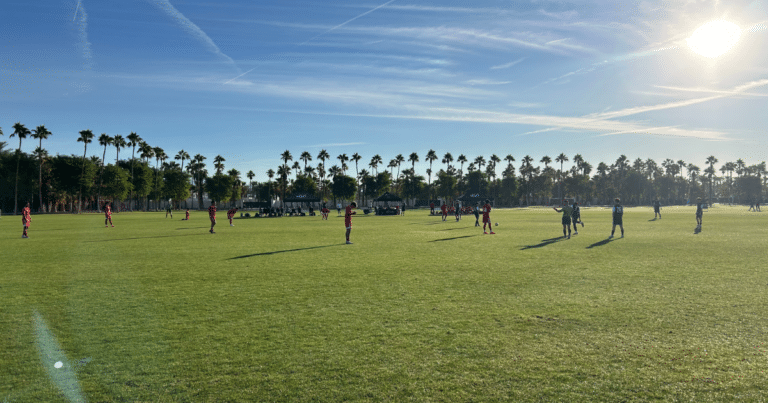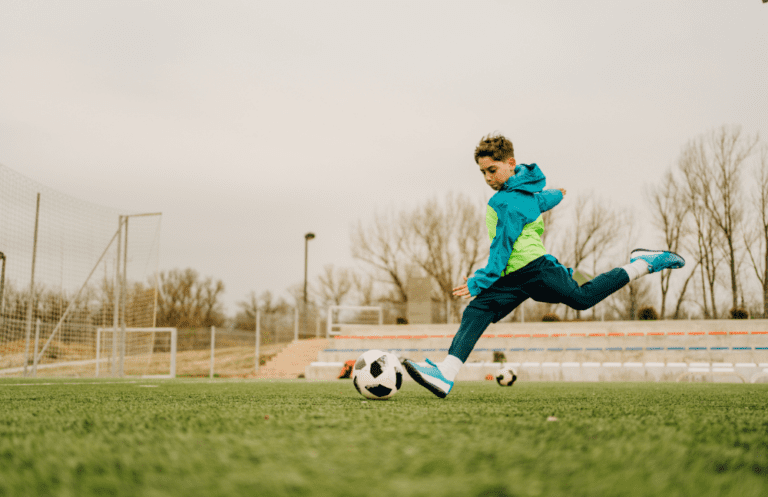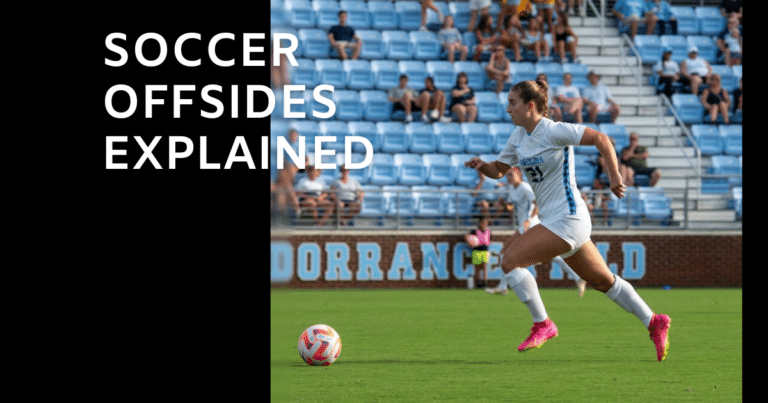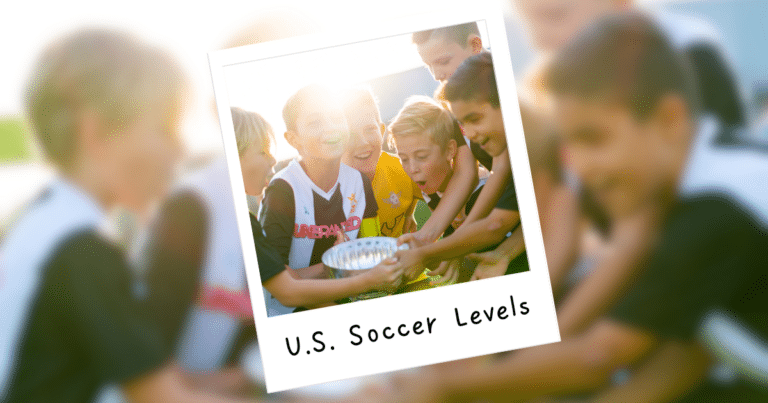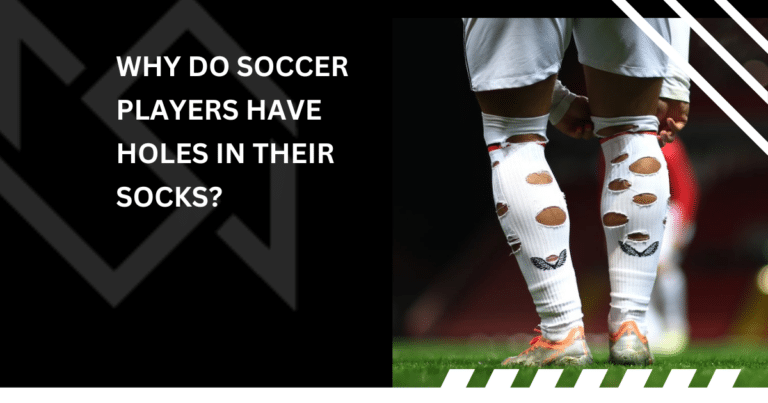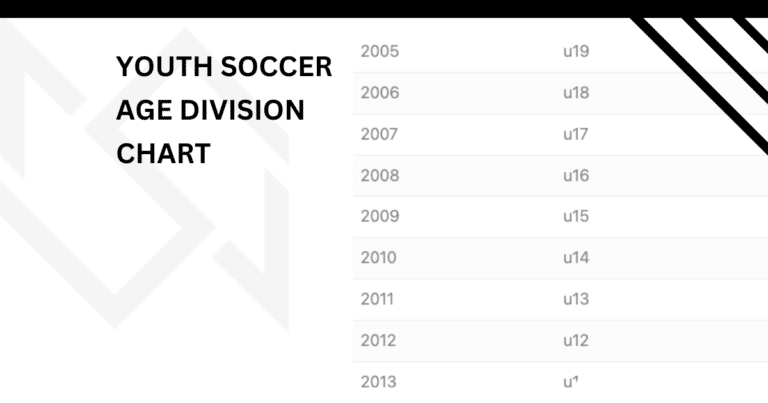What is a Trap in Soccer?
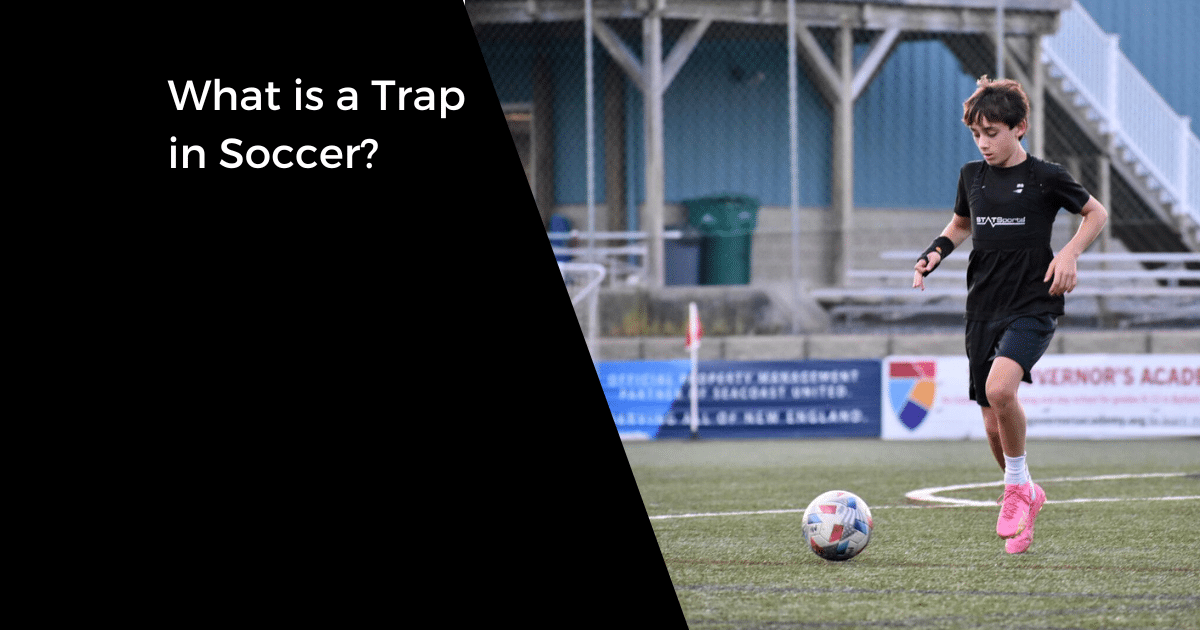
A trap is stopping and gaining possession of the ball after receiving a pass from a teammate or a misplaced pass from an opponent.
“Receiving” or “controlling” the ball is another name for trapping.
Key Takeaways From This Article:
- Learning how to trap a soccer ball should be part of a player’s development.
- There are different types of traps which we explain here.
- Mastering a soccer trap allows you to gain position of the ball and make your next move quickly.
Choosing how to trap the ball and which part of your body to use is determined by your position on the field, the positioning of your teammates, the positioning of your opponents, and the path of the ball.

I’ve seen many elite players trap the ball effortlessly and are ready to make their next move in a second. As a player, this is the edge you’ll want for yourself.
In this article, we’ll go over the simple steps you can take to trap the soccer ball and the different types of traps.
How Do I Trap the Ball?
The video above does a great job showing you how to trap. Here are some things to keep in mind.
- Position yourself correctly: Before the ball comes to you, make sure you are in a good position to receive it. Keep your knees bent, your feet shoulder-width apart, and your body balanced. Anticipate where the ball will come from and adjust your body accordingly.
- Use the inside of your foot: When trapping a rolling ball, use the inside of your foot to cushion the impact. Keep your foot relaxed and let the ball come to you. As the ball touches your foot, absorb the impact and direct the ball in the direction you want to go.
- Use your thigh: When trapping a high ball, use your thigh to control it. Position your thigh parallel to the ground and let the ball hit it. As the ball touches your thigh, cushion the impact and direct the ball to the ground.
- Use your chest: When trapping a ball in the air, use your chest to bring it down. Position your body under the ball and let it hit your chest. As the ball touches your chest, cushion the impact and direct the ball to the ground.
- Use your head: When trapping a high ball, use your head to control it. Position yourself under the ball and let it hit your forehead. As the ball touches your head, cushion the impact and direct the ball in the direction you want to go.
The best way to practice trapping is repetition. You can use a soccer rebounder or wall to pass back and forth.
What Are the Different Types of Traps in Soccer?

It’s common practice to begin these sequences with a one-touch trap. Though some may be born with an inherent talent, trapping is a skill every player can and should develop early on.
Below are various traps that can expand your offensive game.
Instep Trap
The most common trap in soccer is the instep trap. Done successfully, you’ll be able to dribble, shoot, or pass off of the trap.
The instep trap occurs when players capture the ball with the inside of their foot or instep, as the name implies.
Using the inside of your foot allows your ankle to naturally absorb the ball coming in.

Outstep Trap
A player who traps the ball with the outside and middle of their foot is said to be using an outstep trap.
It’s not as smooth as the instep trap, but it may be utilized to fool opponents and set up a pass or shot in an unexpected direction.
A lot of players who are dominant with one foot will use their outstep to compensate for their weaker foot.
Step Trap
Using the bottom of your foot as a “trap” to control the ball is called a “step trap” or a “stud trap.”
This style of trap is good for completely stopping the ball.
The step trap is becoming increasingly rare to see in current games due to the increased complexity and speed of the game.
When you put your foot on the ball, you have to get into another motion. A split second can make a huge difference in soccer!
Laces Trap
When the ball is bounced high into the air, players often utilize their laces to capture it as it descends.
It takes a soft touch to catch the bouncing ball in your laces before it reaches the ground.
The best way to think about this is to cushion the fall of the ball. This is similar to the egg toss where you bring your hand back as the egg falls.
If you perform a laces trap after your opponent has punted the ball into the air, they will likely pressure you since they have more time to predict the ball’s trajectory.
Thigh Trap
Another technique that comes in handy when a punted ball is headed straight for you is the thigh trap.
It’s possible you misread the ball’s trajectory and ended up catching it with your thigh instead of your laces.
Catching the ball with your thigh is a natural reaction when opponents are coming in quickly, but it may also be a tactical choice when you need to get possession of the ball quickly and your foot is too far away.
In this case, the ball needs to be at an appropriate height; not too high where you’ll simply use your head and not too low where you are bending down just to get a thigh on it.
Chest Trap
Compared to your thigh or foot, trapping it on your chest is a faster way of gaining control of a falling ball.
The circumference of your chest allows the ball to hit your body and fall almost directly down in front of you.
Typically, a chest trap would be used when the ball is in the air from a weak pass or throw-in.
A chest trap can spark a quick pass, shot, or dribble.
What Are Common Mistakes in Trapping?

Poor Timing
Timing is everything in soccer, especially when it comes to trapping the ball.
If you mistime your trap, you risk losing possession of the ball. This may give the other team a chance to score.
Trapping the ball too late can lead to the ball bouncing off your foot or shin
On the flip side, trapping the ball too early can cause you to lose control of the ball. To avoid these mistakes, focus on the trajectory of the ball and anticipate when it will reach you.
Incorrect Body Position
Your body should be positioned in a way that allows you to receive the ball with ease and control.
One common mistake is leaning back when trapping the ball, which can cause the ball to bounce off your foot and out of your control.
Also, leaning too far forward can cause you to lose balance and fall over.
You’ll wan to keep your body weight centered and your knees slightly bent. Anticipate where the ball is going and get your entire body under it so you can trap it.
Lack of Concentration
A lack of focus can result in missed opportunities and lost possession of the ball.
One common mistake is not paying attention to the ball as it comes towards you. This can cause you to mistime your trap or have incorrect body positioning.
Never take a play off and keep your eyes on the ball.

Written By: Beau Bridges
Beau is the founder of SoccerNovo, dedicated to helping players and parents navigate the youth soccer landscape. As a former youth coach and soccer parent, he shares insights on player development, recruiting, and the ever-evolving soccer scene in the U.S.
Let’s connect


